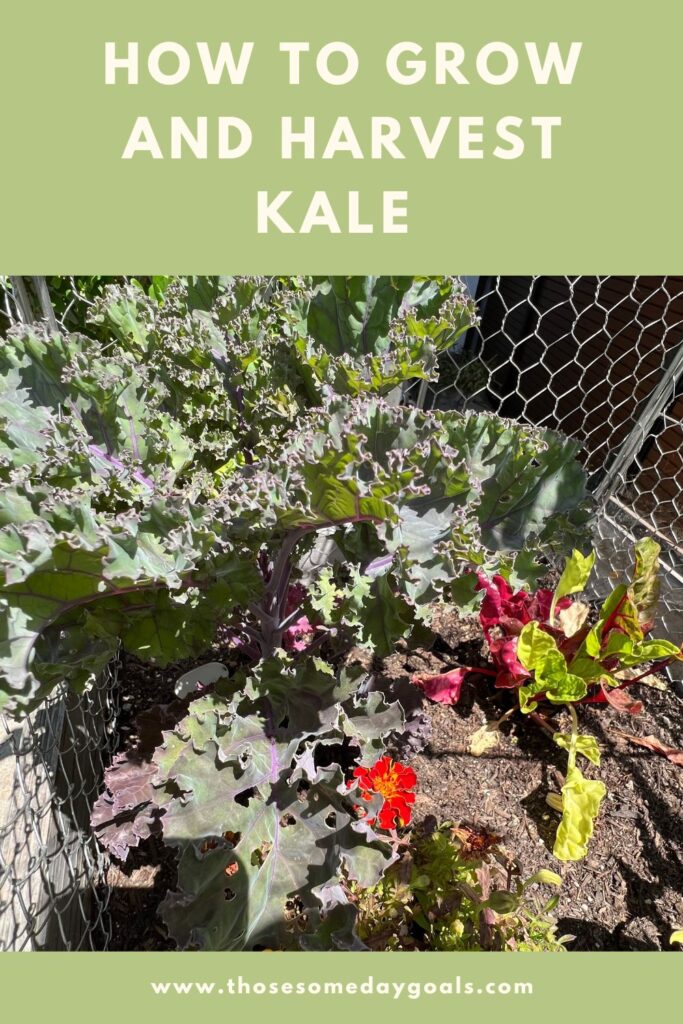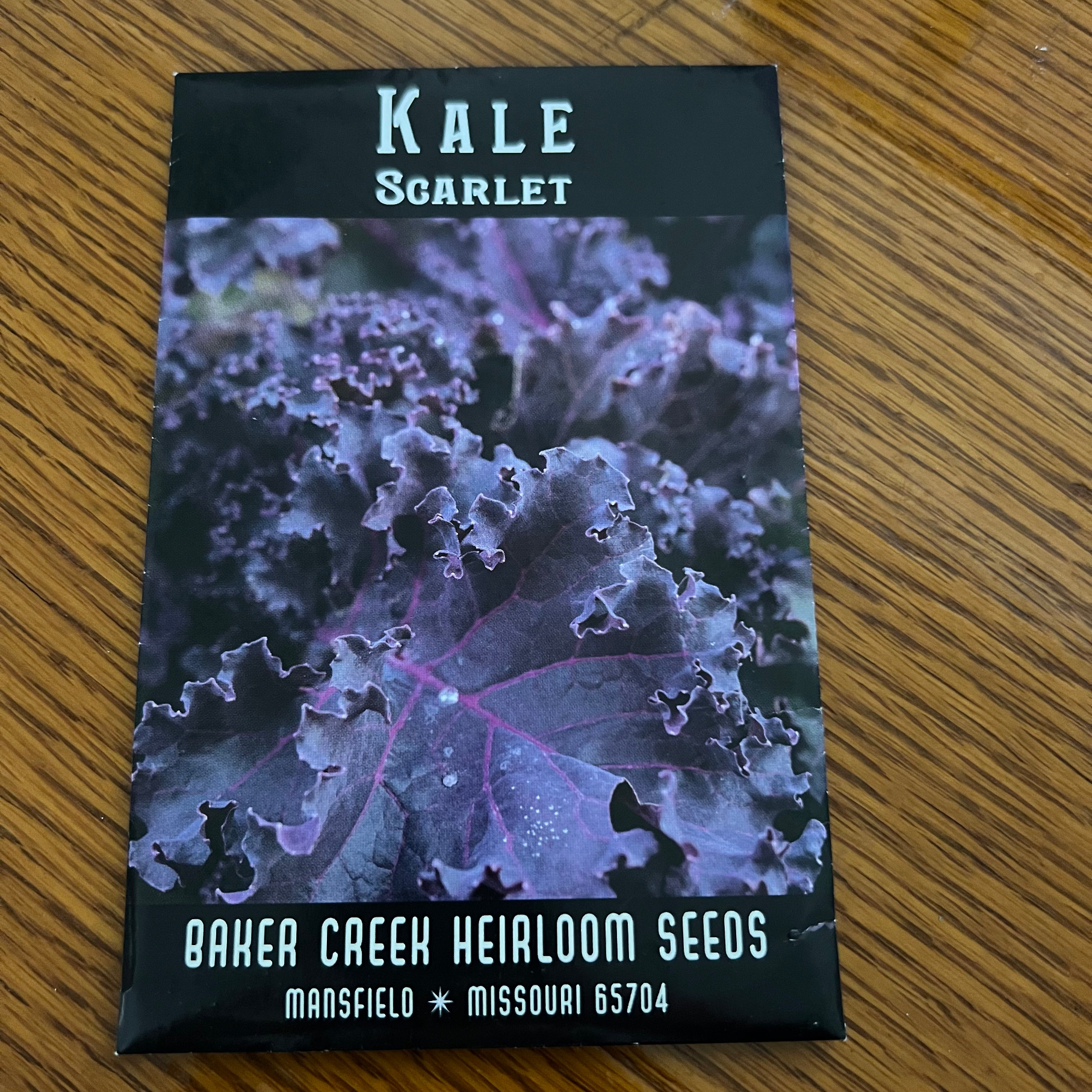If you’ve known me for a while, you might be surprised to see me contemplating how to grow and harvest kale in a raised garden bed. I’ve always looked at kale with skepticism, passing on it for Swiss chard every time. This year, I’ve been convinced to give it a try. Sure, it might be the striking purple color that finally won me over, but let’s pretend it is all about the nutritional benefits.
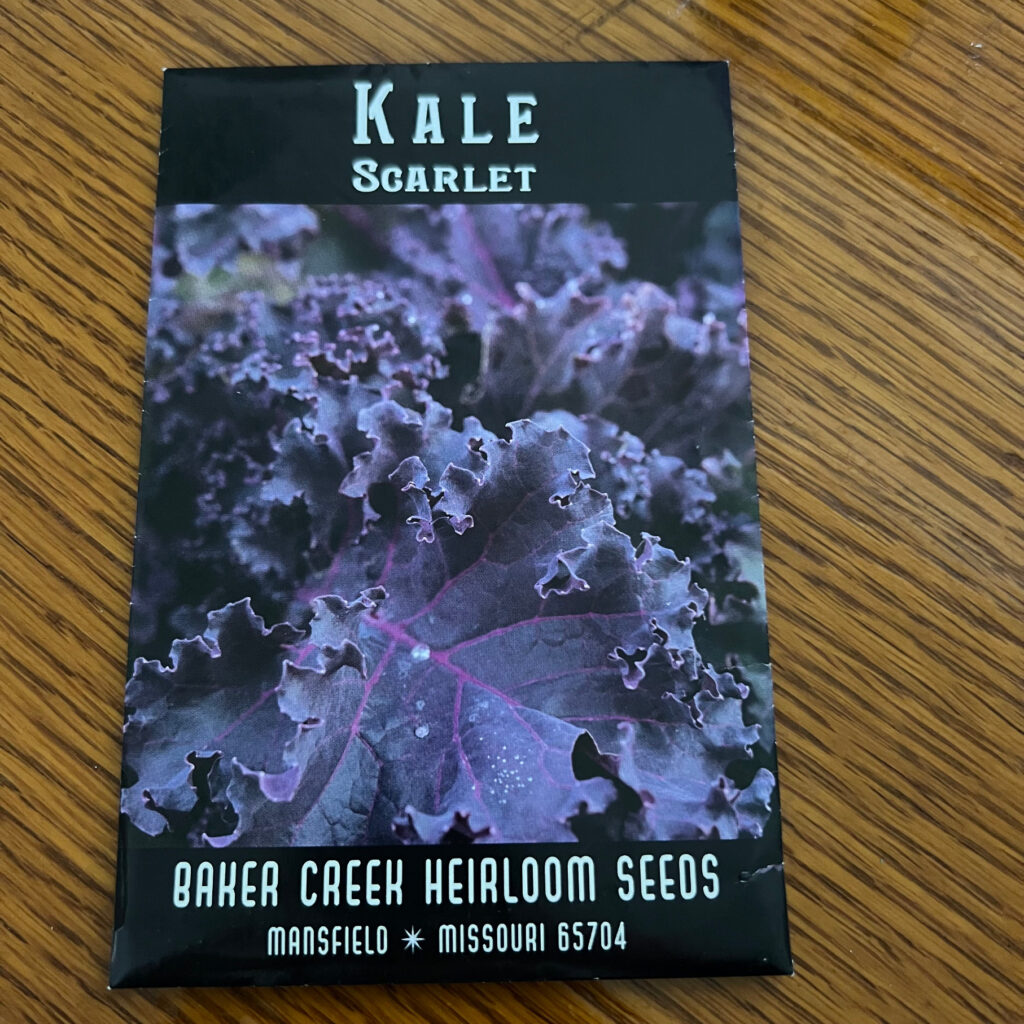
How I started growing kale from seeds
Let’s take a step back to where we started back in February, when I first started to ponder the mysteries of how to grow and harvest kale. I started with a seed tray with a greenhouse cover and loads of different seeds. I planted tons of bell peppers, tomato plants, lavender, nasturtium, and, yes, kale.
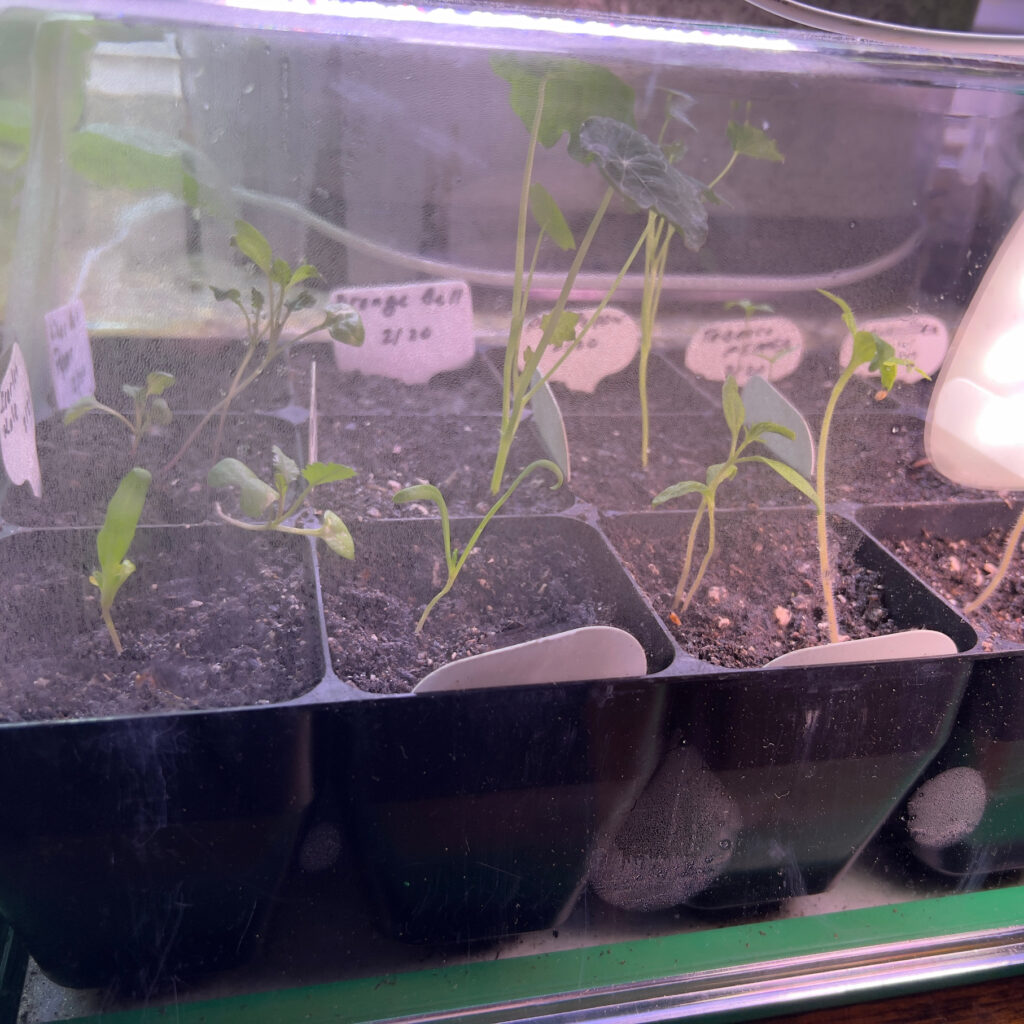
Three of the scarlet kale plants sprouted, but only one really thrived. By May, the plant was strong enough to transplant into the garden bed. But it stayed tiny for a ridiculously long time.
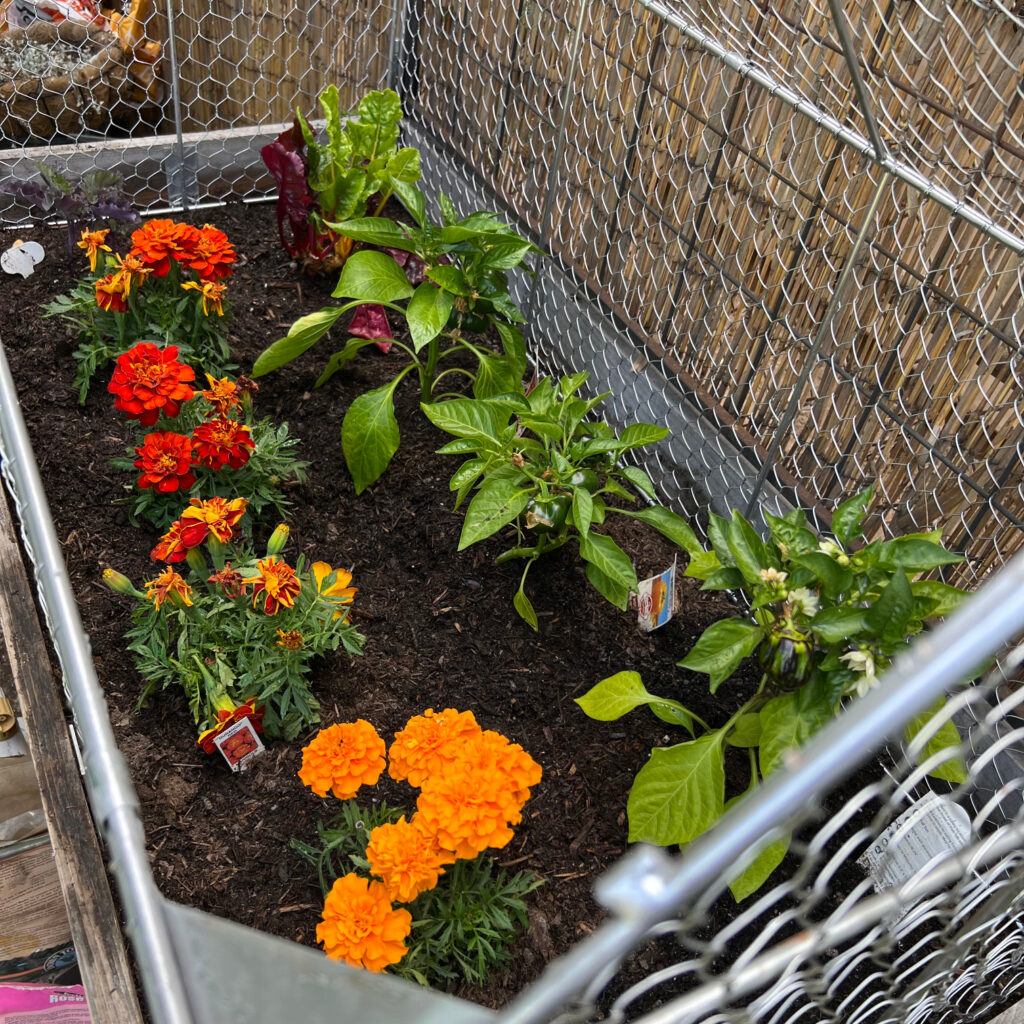
That’s the kale all the way at the top and to the left of the Swiss chard. You can barely see it!
We shifted the garden bed because of a fiasco with the neighbor and our shared fence (so much drama there). The Swiss chard hated the change, but the kale took off. I think that slight shift gave the kale the added sunshine it needed, but shade during the hottest parts of the afternoon. I also made sure to give it small amounts of extra water in between the scheduled automatic watering from the bubblers on very hot days.
And here we are:
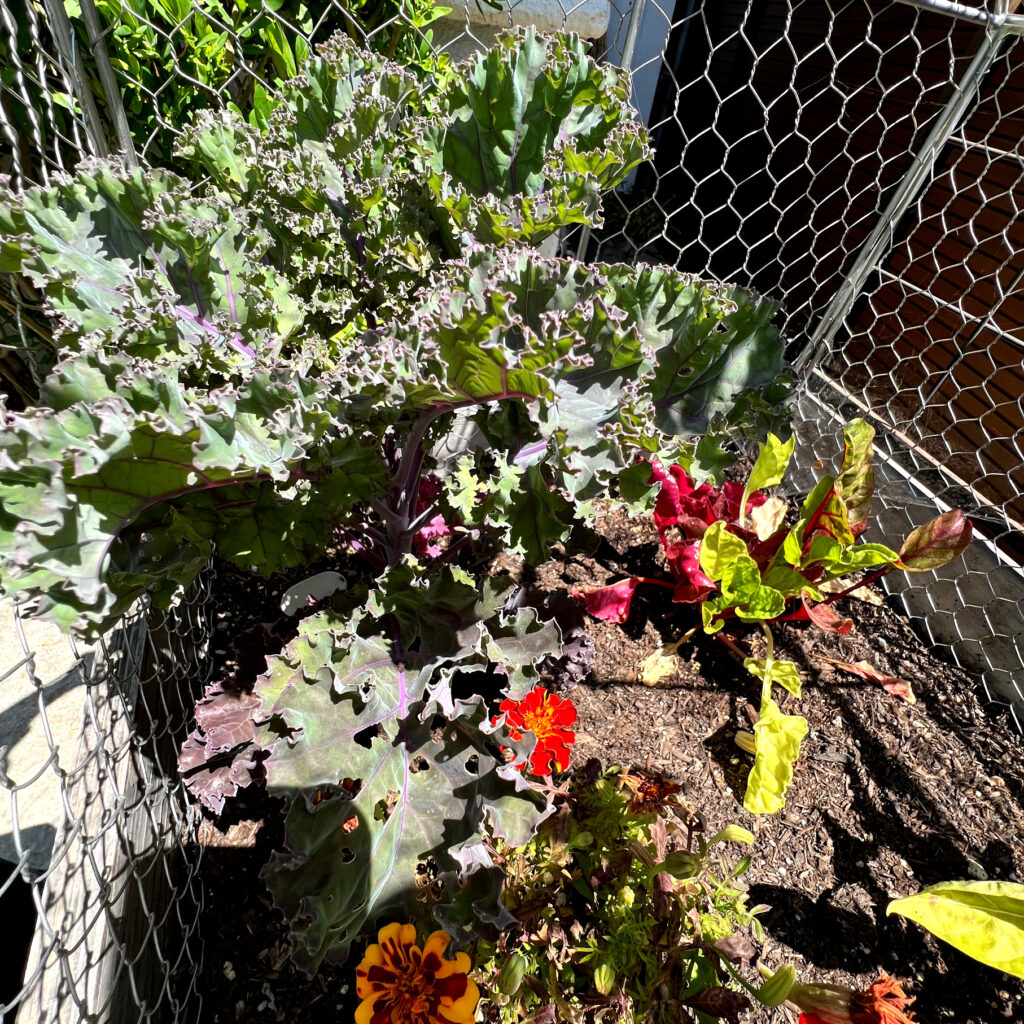
When to plant kale
I often see the question, “Can I plant kale in summer?” Yes and no. The ideal temperature for growing scarlet kale is 45-85F. That’s a huge range. We live in Venice, so 80F is pretty hot for us, and we don’t often hit that mark until August/September. So, if you live in a mild-ish climate, you can grow and harvest kale well into summer.
Kale is often referred to as a spring/fall crop. But our fall temps can be the hottest of the year, so we have to take extra care to give delicate plants shade during the afternoon. If you have a toasty summer where temps soar into the 90s, definitely hold off putting kale into the ground.
What is kale’s cold temperature tolerance?
Scarlet kale is frost-hardy. But it does need 6-12 hours of sunlight and daytime temps of at least 45F. I grew up in Ohio by Lake Erie, so we could get snow in late October. While kale can withstand a one-off dusting of snow, you aren’t going to want to keep it in the ground much longer. They recommend planting seeds in the ground (or transplanting) 2-4 weeks around the last frost or 6 weeks before the first frost sets in during the fall.
Tips for how to grow and harvest kale
Once you’ve gotten your garden bed positioned for optimal light, be sure you can access it well enough to keep the soil moist, but not sopping wet. Consistently moist soil leads to tender leaves on the kale at harvest time.
Another trick? Frosts or damp fall (or spring) weather creates the perfect environment for kale plants to grow slightly sweeter leaves. Dry, hot weather harvesting may yield somewhat more bitter leaves.
Harvest regularly. I’m so bad at this. I’m convinced the leaves aren’t ready yet. They are. Once the baby leaves are at least 3 inches long, you can start to add them to salads, quiche recipes, sandwiches, and more. If your plant is relatively mature, start harvesting from the outside and move in to keep the center “stalk” producing leaves.
The bigger the leaves get and the hotter the weather, the less vibrantly purple the scarlet kale will look. Although, the stems are always gorgeously purple.
If you are like me and avoid harvesting out of stubbornness, you risk the potential for your kale to bolt. Can you still eat the kale after it bolts? Sure. It is just a bit more bitter and tougher. I’d aim for sautéing it.
BUT some gardeners recommend peeling away the bolted leaves and eating the inner stem, which can still be tender and lovely. I haven’t tried this yet, so you may want to hit YouTube for tips on doing that.
Visit us for more blogs on our container gardening journey.
